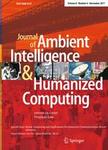版权所有:内蒙古大学图书馆 技术提供:维普资讯• 智图
内蒙古自治区呼和浩特市赛罕区大学西街235号 邮编: 010021

作者机构:Yunnan Univ Sch Informat Sci & Engn Kunming 650091 Yunnan Peoples R China Informat Technol Dev Ctr Yunnan Prov Kunming 650091 Yunnan Peoples R China Univ Milan Dipartimento Informat Via Bramante 65 I-26013 Crema CR Italy Khalifa Univ Dept Elect & Comp Engn POB 127788 Abu Dhabi U Arab Emirates
出 版 物:《JOURNAL OF AMBIENT INTELLIGENCE AND HUMANIZED COMPUTING》 (情境智能与人性化计算杂志)
年 卷 期:2019年第10卷第10期
页 面:3761-3774页
核心收录:
学科分类:0810[工学-信息与通信工程] 0711[理学-系统科学] 07[理学] 08[工学] 070105[理学-运筹学与控制论] 081101[工学-控制理论与控制工程] 0701[理学-数学] 071101[理学-系统理论] 0811[工学-控制科学与工程] 0812[工学-计算机科学与技术(可授工学、理学学位)]
基 金:National Natural Science Foundation of China [61463049 61761045]
主 题:Mobile healthcare Polling control Exhaustive service Wireless body area networks (WBANs) Probability generating function Energy efficiency
摘 要:Wireless body area networks (WBANs) play an important role in human health monitoring for mobile healthcare. The improvement of service performance and low-power consumption are the two challenges for these medical WBANs, because those energy-limited wireless medical sensors must transmit the monitoring data to the personal server (PS) via intra-WBAN in time. Further, precise mathematical modeling combining with the sleeping state to measure this improvement theoretically is still lack. Therefore, a polling control with exhaustive service using the sleeping schema is proposed to address the problems in WBANs communication for smart health. Based on the managed access phase (MAP) specified in the IEEE 802.15.6 standard, it has been attempting to improve the energy efficiency through a self-managing sleeping schema for both the sensor nodes and the PS according to the load in intra-WBANs, in which the node will soon turn to sleep upon completion of transmitting all its current data packets. Additionally, by employing the embedded Markov chain and probability generating function, the proposed model is established, and the performance characteristics-the mean cyclic period and queue length at the polling moment-were accurately obtained to justify the service performance can be guaranteed. In addition, the expressions of the quantitative relationship among sleeping time, performance characteristics and network parameters were derived in closed form, which can easily evaluate the energy efficiency. Simulations were carried out to justify this model.